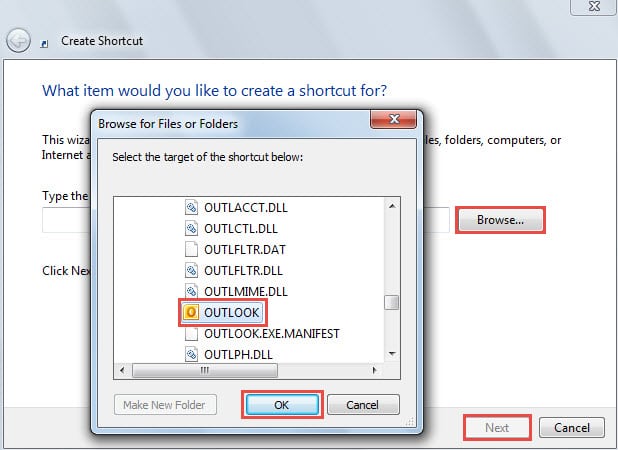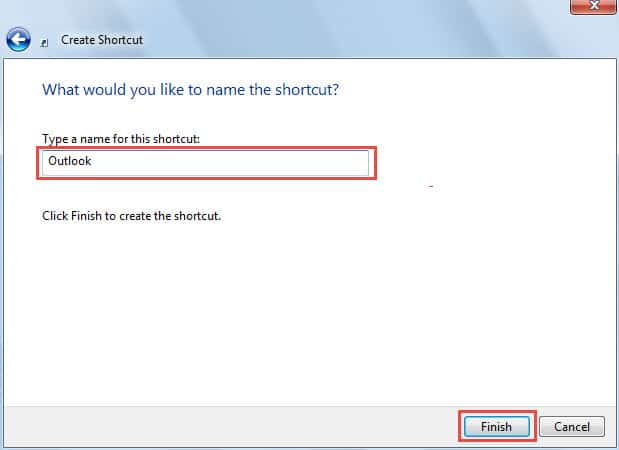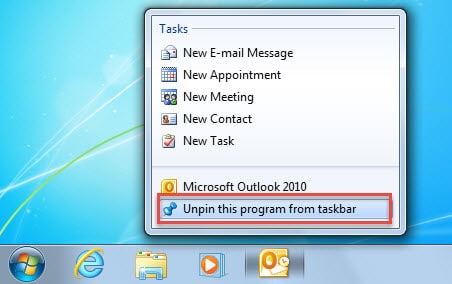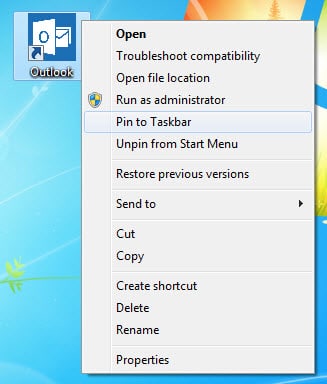Someone may dislike the default icon for Outlook program. This article will exhibit a method to apply a favorite icon to your Outlook. It can be accomplished just in 4 steps.
As we all know, Outlook 2010 uses a yellow icon. But since Outlook 2013, it has changed to a blue one. To be honest, I am still using Outlook 2010, but I prefer the blue icon. Hence I feel like changing Outlook icon from the default yellow to blue. Here are my solutions.
Step 1: Procure an Icon File as Per Your Preference
At the very outset, you have to gain an icon file for Outlook. You can search and download one from the Internet. Or if you’ve gotten a picture file in common format, such as .jpg or .png. You can convert it to .ico with extra tool, like Snagit. It supports us to save the file in any picture formats as a Windows icon file.
![]()
Step 2: Create a Desktop Shortcut for Outlook
After achieving an icon file for Outlook, you should proceed to create a Desktop Shortcut for Outlook. Take the following operations.
- To begin with, right click the blank space in the Desktop and choose “New” > “Shortcut” from the context menu.
- In the subsequent window, click “Browse” button and then locate OUTLOOK. Click “OK” and then “Next”.
- Next specify a name for this shortcut, such as “Outlook”.
- And lastly, hit “Finish” button to create it successfully.
Now you will see a Desktop shortcut for Outlook. Also, it is shown in its default icon. Move on to change it at once.
Step 3: Change the Icon of Outlook Shortcut
- For a start, right click on the newly generated shortcut and select “Properties” from its right clicking menu.
- In the latter dialog box, click a button of “Change Icon” under “Shortcut” tab.
- Then in “Change Icon” dialog box, click “Browse” button.
- Next in the new popup window, browse to the destination folder, pitch on the target .ico file and hit “Open”.
- Finally click a series of “OK” until all the dialog boxes are closed entirely.
When you back to Desktop, you will discover that the previously pinned Outlook shortcut on Taskbar is still in its original icon. Therefore, you need to continue to change it as well.
Step 4: Pin the Outlook Shortcut to Taskbar
- Firstly, you should unpin the original shortcut from the Taskbar. Right click it and select “Unpin this program from taskbar”.
- Then right click on the new Desktop shortcut, and choose “Pin to Taskbar”.
- Eventually you will see Outlook program pinned on Taskbar in the new icon.
Recover Outlook from Unanticipated Crashes
Sometimes, Outlook crashes may occur to us unexpectedly. Therefore, as a rule, making a regular backup for Outlook data is highly needed. Also, you wouldn’t be able to rest easy. You should continue to test your backups in case of its failures. Of course, even if without backups, you still can repair PST data damage by a well-proven tool, like DataNumen Outlook Repair.
Author Introduction:
Shirley Zhang is a data recovery expert in DataNumen, Inc., which is the world leader in data recovery technologies, including repair mdf file corruption and outlook repair software products. For more information visit www.datanumen.com



